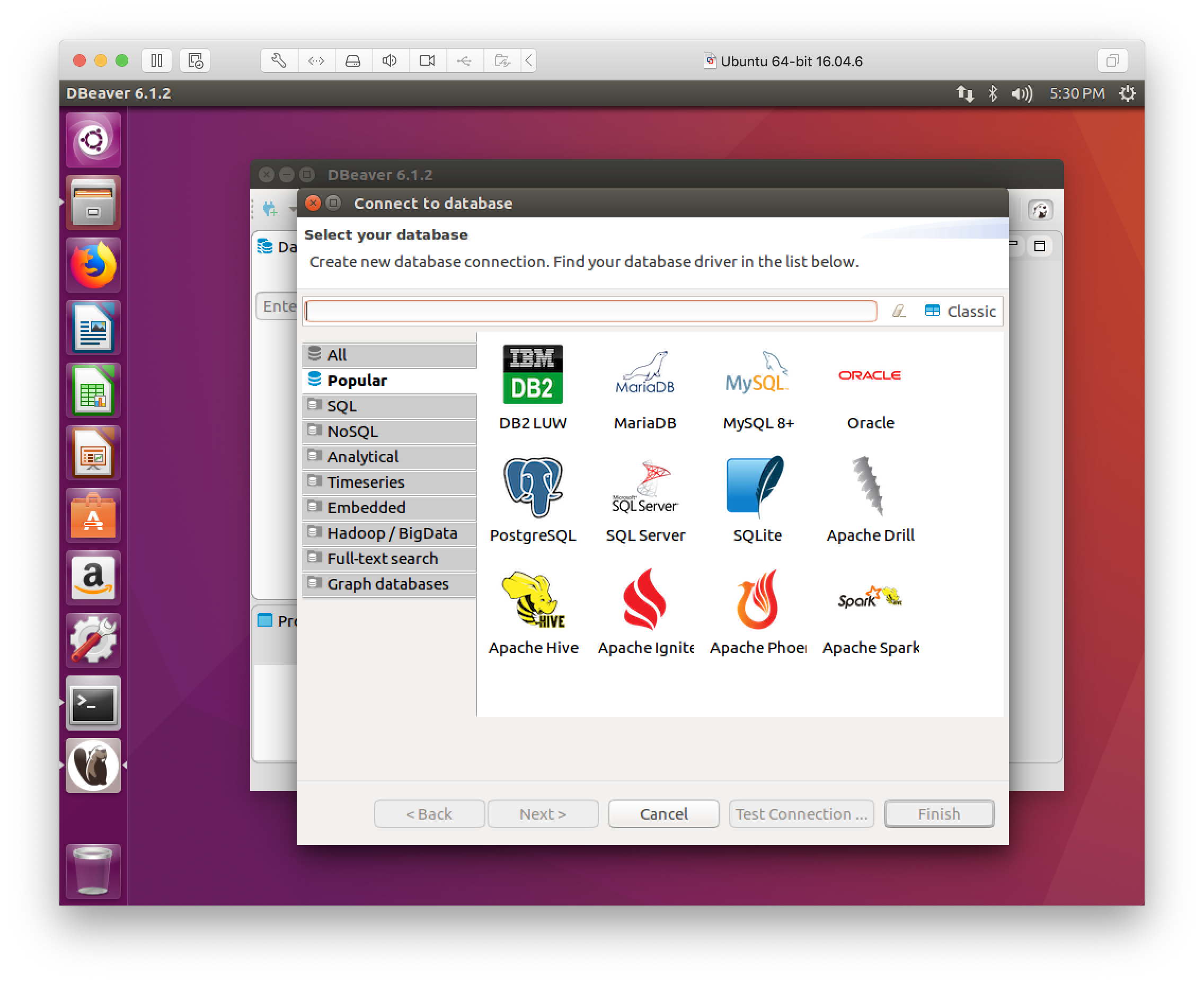
DBeaver comes in 2 editions: Community and Enterprise.
#Dbeaver tutorial drivers
For Non-Relational and NoSQL Databases, it uses proprietary Database Drivers to interact with them. Often referred to as a universal Database Tool, DBeaver supports more than 80 Databases (which are both Relational and Non-Relational) including PostgreSQL, MySQL, SQLite, SQL Server, DB2, Sybase, Phoenix, MS Access, Teradata, Apache Hive, etc.ĭBeaver uses the JDBC Application Programming Interface (API) to interact with Relational Databases via a JDBC Driver.
#Dbeaver tutorial software
Sign up here for a 14-day free trial! What is DBeaver? Image Source: DBeaver is a free, open-source, and multi-platform Database Management/Administration Tool and SQL Client software application for Database Administrators, Developers, and Analysts.

Live Support: Hevo team is available round the clock to extend exceptional support to its customers through chat, email, and support calls.Live Monitoring: Advanced monitoring gives you a one-stop view to watch all the activities that occur within Data Pipelines.Scalable Infrastructure: Hevo has in-built integrations for 100’s of sources that can help you scale your data infrastructure as required.Schema Management: Hevo can automatically detect the schema of the incoming data and map it to the destination schema.So, your data is always ready for analysis. Real-Time: Hevo offers real-time data migration.Data Transformation: It provides a simple interface to perfect, modify, and enrich the data you want to transfer.Fully Managed: It requires no management and maintenance as Hevo is a fully automated platform.Let’s look at some of the salient features of Hevo: Hevo provides a truly efficient and fully automated solution to manage data in real-time and always have analysis-ready data. Its fault-tolerant architecture makes sure that your data is secure and consistent. It will automate your data flow in minutes without writing any line of code. Hevo Data is a No-code Data Pipeline that offers a fully managed solution to set up data integration from PostgreSQL and 150+ Data Sources (including 40+ Free Data Sources)and will let you directly load data to a Data Warehouse or the destination of your choice. On top of that, Postgres offers high customizability and hence it can readily incorporate new functionalities into its system. It supports various types of advanced data types such as UUID, JSON, Network Addresses, Geometric Data, etc. It is ACID-compliant and hence it ensures that your transactions are handled in a timely and efficient manner. PostgreSQL Relational Database System is a powerful and scalable platform based on a Single Server Architecture with no concept of Clusters. It also allows you to store 100s of TBs of data in tables. PostgreSQL offers all the standard and modern features expected by an Enterprise Transactional Database like unique primary keys, foreign key referential integrity, user-defined types, multi-version concurrency control, etc. PostgreSQL is completely free for everyone to use and requires little to no maintenance, making it very popular among users all over the world. As the name suggests, Postgres emphasizes SQL compliance and is used as the primary Data Store or Data Warehouse by many Web, Mobile, and Analytics Applications.


It is a row-oriented database and is best suited for transactional workloads. What is PostgreSQL? Image Source: PostgreSQL, also known as Postgres, is a free and open-source Database that allows us to work with Relational Databases. Before getting into the DBeaver PostgreSQL connection, let’s discuss both platforms in brief. It can be used to access and manage any Database or Cloud Application that has an ODBC or JDBC driver, such as PostgreSQL, Microsoft SQL Server, MySQL, or Oracle. DBeaver comes with many powerful inbuilt features that make it easy and fun to access the Databases. Connecting DBeaver PostgreSQL via PostgreSQL JDBC DriverĭBeaver is a free and universal Database Management Tool for Database Administrators, Developers, Data Analysts, and everyone dealing with Databases.


 0 kommentar(er)
0 kommentar(er)
